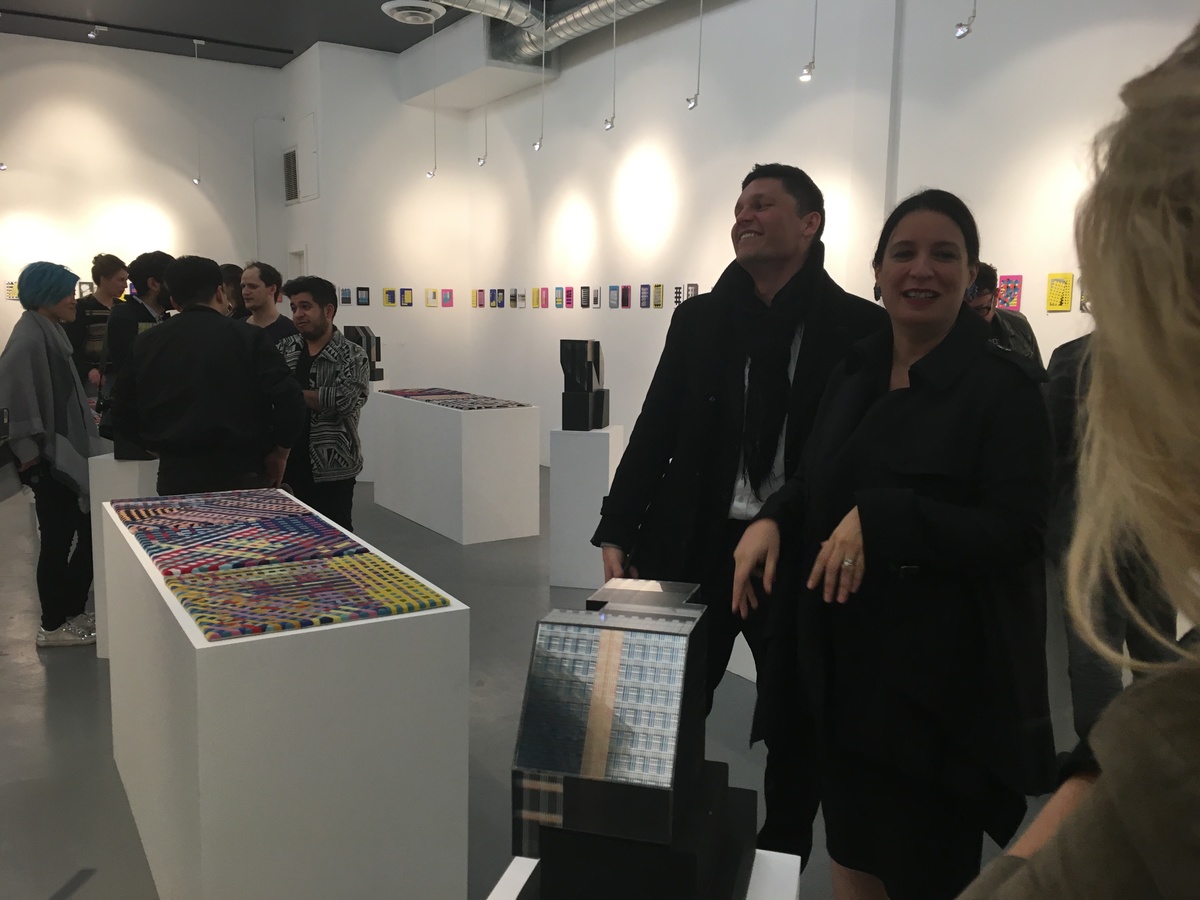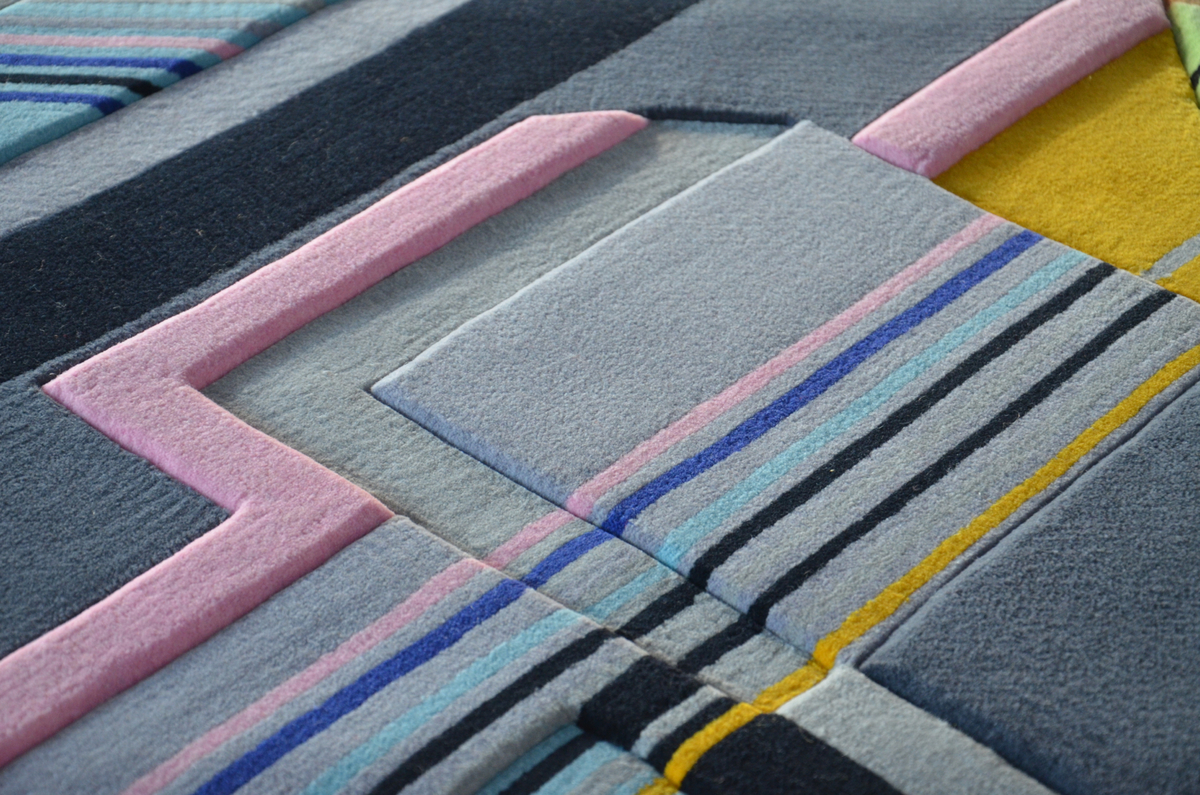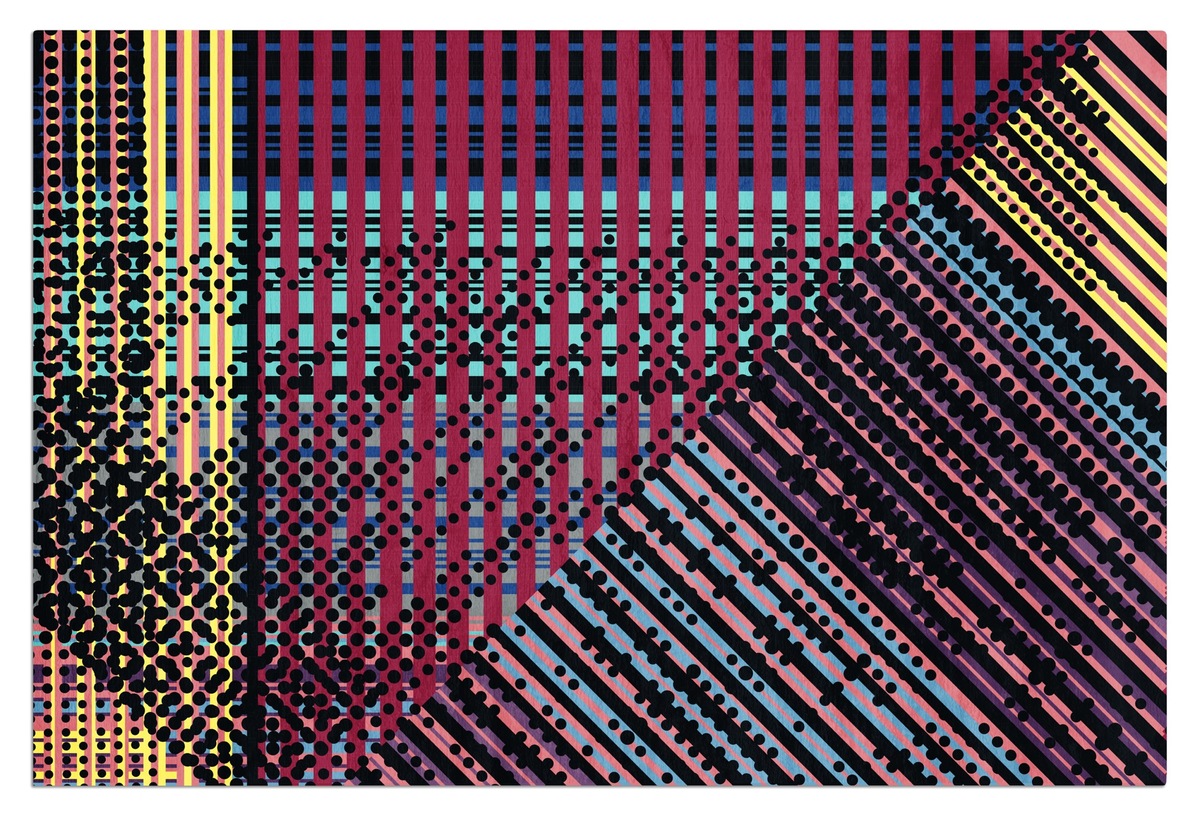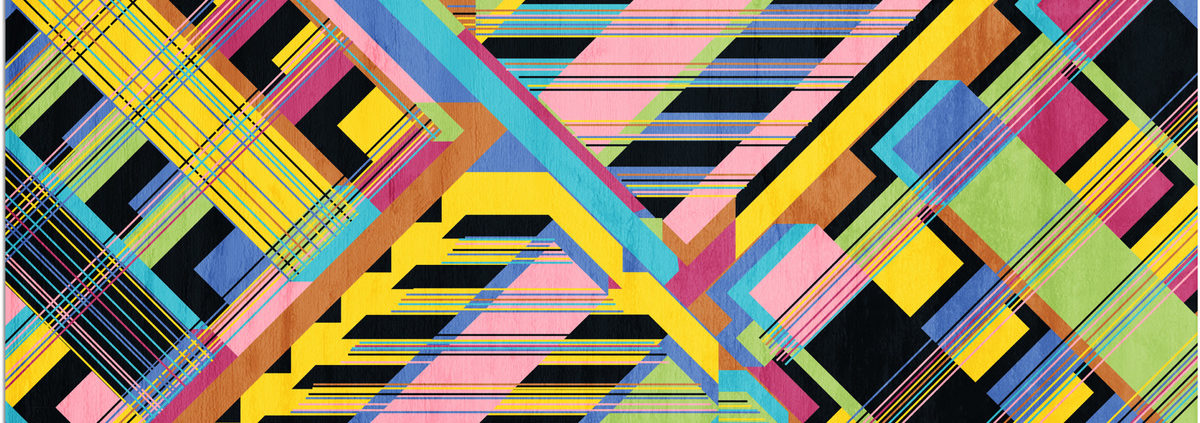SCI_Arc's Elena Manferdini's "Building Portraits" area rugs
(via Archinect)
At night, L.A.’s Chinatown is a mixture of shuttered family-owned shops and revamped gallery spaces, a kind of cross-hatching of history and amped-up opportunism. One can wander down numerous alleyways lit only by hanging lanterns until the blazing flourescence of a glass-fronted gallery comes into view. This historical menagerie turned out to be apt foregrounding for the “Building Portraits” opening held at the ToCo Haus Gallery on January 27th; here were rugs that blended architectural precedent with imaginative urban abstraction.

Andrei Zerebecky (third from right) and Elena Manferdini (second from right) get into the groove of the “Building Portraits” opening at ToCo Haus Gallery.
The collection is a collaboration between Four O Nine, a firm run by Lukasz Kos and Andrei Zerebecky, and artist and designer Elena Manferdini, who currently teaches at SCI-Arc and is the owner of Atelier Manferdini. Four O Nine’s “Urban Fabric” rugs, which render vast aerial views of cityscapes in New Zealand virgin wool, have been a success for several years. The rugs portray city blocks in textured formation, creating a three dimensional portrait of a landscape most people normally only view from an airplane window. The rugs are as much a delight for designers who regularly build large area models as they are for people who love the sensation of tailored, hand-tufted fabric.

BP Model D. Image: Elena Manferdini + Urban Fabric
For her part, Manferdini drew a series of images that combined studies of facade, fenestration and grids in the form of Mies van der Rohe’s skyscrapers with abstracted “reflections of [their] urban surroundings as well as revealed glimpses of the environment contained within.” The resulting rugs could therefore be likened to portraits of buildings if a Cubist like Picasso had worked in fiber instead of paint; multi-dimensional, intriguingly colorful, and revealing more about a structure than any directly linear interpretation could. At the opening, as participants drank glasses of choice prosecco and clustered around the display tables, it was common to find people running their hands along the valleys and swells of the sample rugs. “My five-year-old nephew would totally play with his toy cars here,” one attendee noted, tracing her hand along an L-shaped groove of fabric.
Zerebecky and Manferdini warmly greeted attendees as they filtered into the show, helping them navigate the physical rug displays, the 2D drawings on the walls, and a few 3D models of abstracted structures sprinkled throughout the gallery. As Manferdini noted in a written statement about the inspiration behind the rugs, “Architects have a seemingly unlimited faith in the power of the grid, a mastering system that has become dominant in a significant portion of the modern American cityscape. The set of drawings used in the design of this collection of rugs explores the potential of the contemporary grid and vibrant colors.”

BP Model A gallery. Image: Elena Manferdini + Urban Fabric
This exploration, if not necessarily redefinition, of the grid is striking. As the world enters an increasingly chaotic time (due both to climate change and widespread political movements that seek to shrink, if not outright capsize, the role of considered diplomacy and international relations), it makes sense to take another look at the role of the grid within design. How can the grid be improved? Does it require a significant transformation? Most importantly, are we thinking about the grid in a way that prevents creative solutions, and if so, how can we refresh that thinking? By pairing art with architecture, the rugs attempt to offer a new perspective on something that is seemingly inviolate in the minds of designers.

A close-up of a groove that one attendee felt would make a perfect raceway for a model car. Image: Elena Manferdini + Urban Fabric
Of course, there’s a certain amount of joy to be taken just from the physical realities of the rugs themselves, whether or not one contemplates the fundamentals of design. Depending on the lighting, either the colorful patterns or the different heights of the fabric dominate one’s visual field. This is partially why the rugs are so immediately accessible, yet ultimately thought-provoking. By introducing Manferdini’s perceptions of architecture into an inherently tactile experience, the abstraction of the grid is reduced: it becomes, quite literally, graspable.

Model D2 shadow. Image: Elena Manferdini + Urban Fabric
Whether or not five-year-old nephews currently playing on these rugs will grow up to be visionary urban planners, or if the rugs themselves will serve more as beautiful conversation pieces, remains to be seen. Whatever their future, at present the “Building Portraits” series is very much worth taking underfoot.
(via Archinect)





